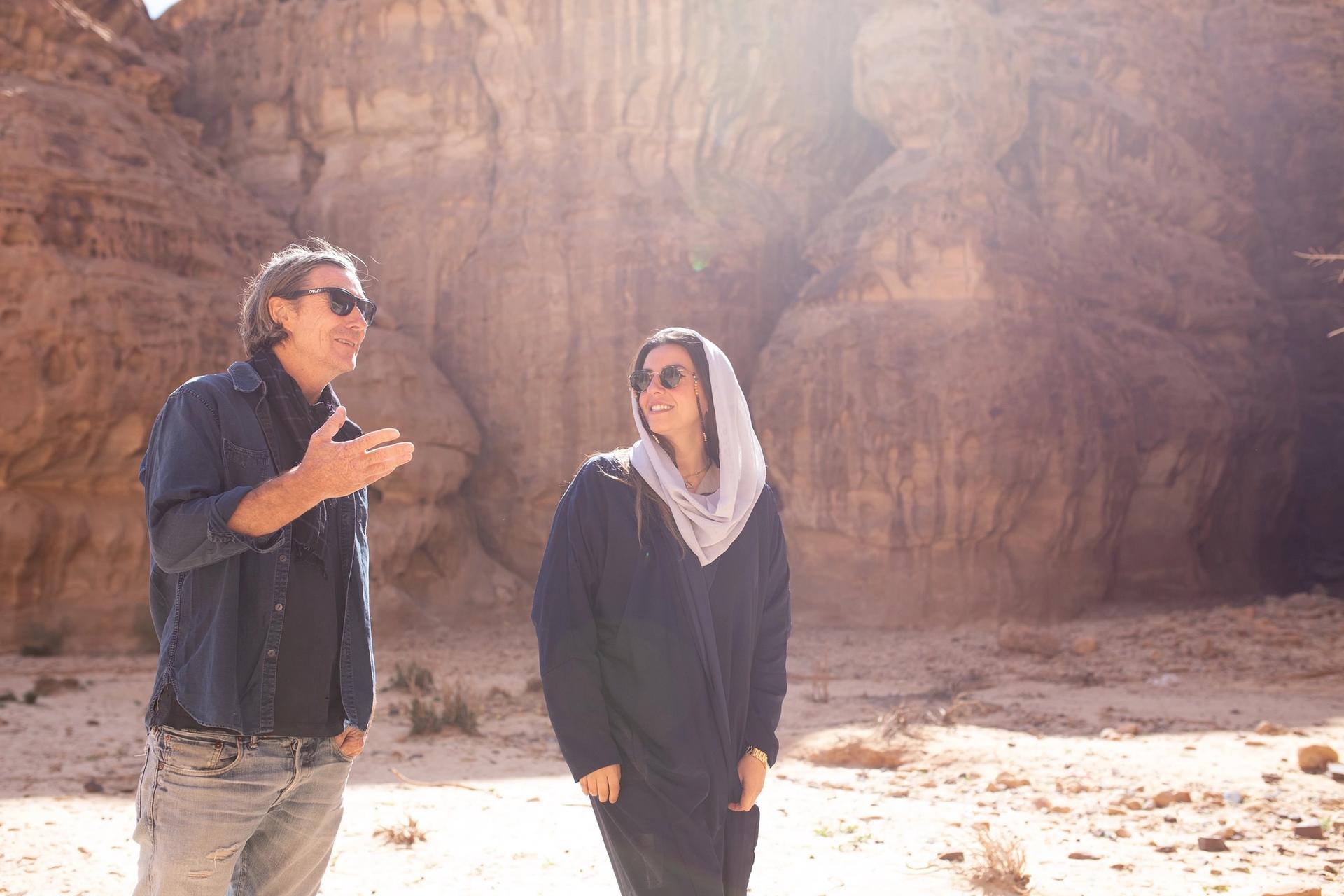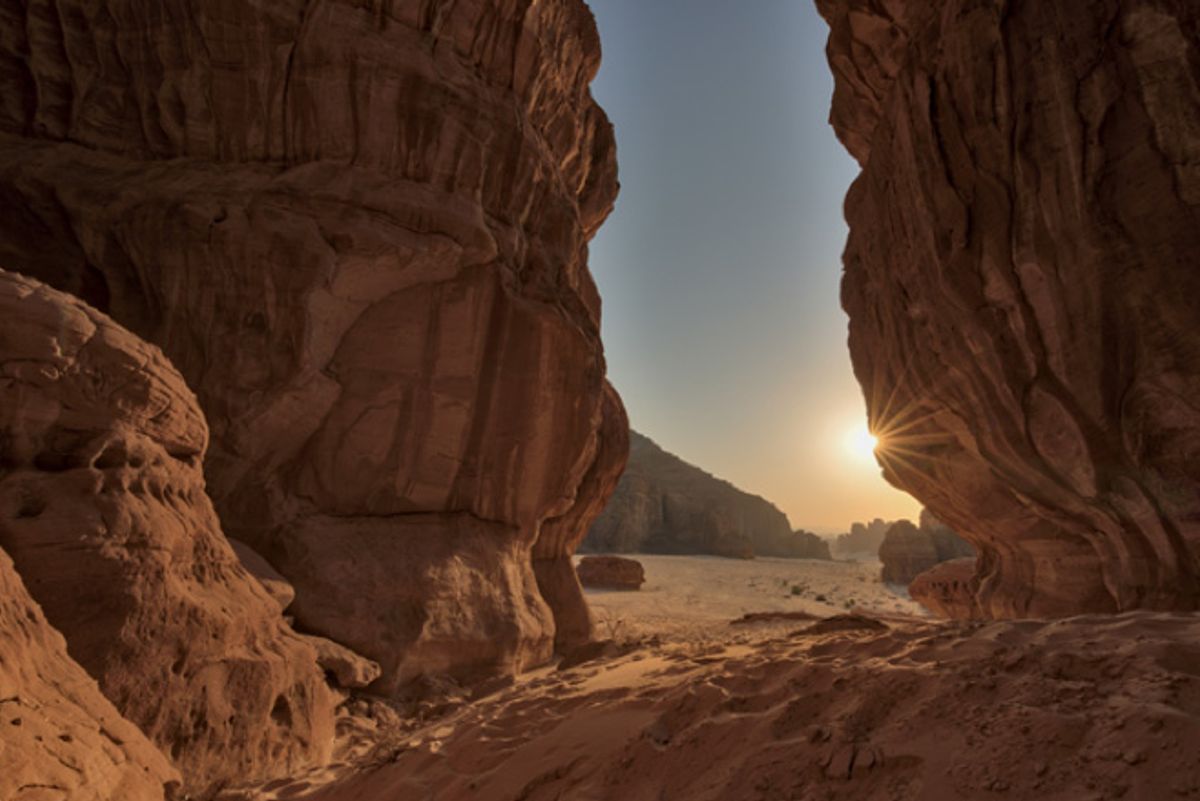Fourteen artists including five Saudi nationals will take part in the inaugural Desert X exhibition launching in the vast AlUla region in northwest Saudi Arabia later this month (31 January-7 March). Participants include Zarah Al Ghamdi and Nasser Al Salem of Saudi Arabia, Egyptian-born Wael Shawky, the Danish collective Superflex, and the Dubai-based street artist eL Seed. The site-specific works will be dotted around the oasis valley and sandstone mountains, an area inhabited thousands of years ago by the peoples of the Lihyan and Nabataean kingdoms.
The Desert X sculpture biennial initially launched in the Coachella Valley in California in 2017. The curators of the new version include the founding Desert X director Neville Wakefield, along with Raneem Farsi and Aya Alireza, both from Saudi Arabia. Desert X AlUla has been organised in collaboration with the Royal Commission for AlUla, the Saudi governmental body led by Crown Prince Mohammad bin Salman.
The Saudi initiative was met with a barrage of criticism last year, however, when it was first announced. Three of the 14 members on Desert X’s board of directors—artist Ed Ruscha, the art historian Yael Lipschutz and the stylist Tristan Milanovich—resigned over the decision. Lipschutz said the development is “about striking a deal with a national government… that is completely undemocratic”. Meanwhile, Christopher Knight of the Los Angeles Times called the move “morally corrupt”.
“People tend to pre-judge things they haven’t yet had the opportunity to experience,” says Wakefield. “We live in binary times, when people are either isolationist or believe in the power of cultural dialogue. Art changes hearts and minds. Denying an entire population this opportunity is to be part of the problem not the solution.”
“Art is a universal language,” adds Farsi, “and that’s in evidence here. It’s beyond boundaries.”

Neville Wakefield and Raneem Farsi, the co-curators of Desert X AlUla, at the site of the exhibition Photo: © Noon Art, courtesy of RCU
The artists involved in the biennial have looked to the ancient history of AlUla, which has been described as an “open living museum”. Farsi says: “AlUla is a crossroads, reliving that moment in a different context.”
eL Seed, known for his contemporary calligraphy, will draw on AlUla’s key position on the “incense trade route”, which connected Asia, Africa and Europe, bringing spices and silk overland. “I wanted to give the illusion that something was here. The scale of the work is crazy. It’s all about humility, the landscape makes me feel like a spot in the universe. I tried to avoid competing with the environment and wanted the work to blend in. I’ve used colours such as super flashy pink in the past; it was important to get away from that,” eL Seed says.
Zarah Al Ghamdi’s piece, Glimpses of the Past, comprises thousands of date tins, all filled with mirrors. “I visited farms in the area and was intrigued by the natural flow of water that created a natural watering system. I have mimicked heritage, cultural and agricultural elements in my work. The piece takes the shape of a river that can be experienced differently from every angle,” she says, citing UK artist Richard Long as inspiration.
Art changes hearts and minds. Denying an entire population this opportunity is to be part of the problem not the solutionNeville Wakefield, founding director Desert X
Desert X AlUla is part of a drive to promote the cultural credentials of Saudi Arabia, helping to diversify the economy and deliver a more “open” image of the country, in line with the government’s Vision 2030 plan.
Crucially, AlUla will reopen its key heritage sites, including the Unesco World Heritage site comprising Hegra, Dadan, AlUla Old Town and Jabal ‘Ikmah in October.
“Who benefits [from the project]? We have engaged with local artists and are running educational workshops,” says Farsi. “The artists themselves are gaining new experiences, they’re shedding their geographic boundaries. And both sides [east and west] will benefit from exploring the works. This is an open invitation for everyone.” Tickets to the event are free.


